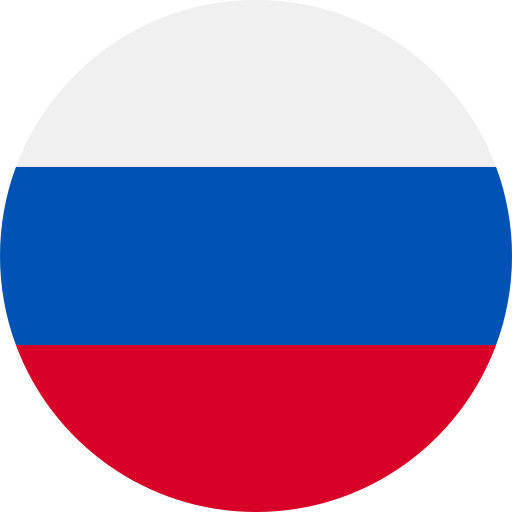Key Takeaways
- Historical Evolution: The Russian language has evolved from Old East Slavic roots, shaped by significant historical events and cultural exchanges since the 10th century.
- Cultural Influence: Various influences, such as Mongol invasions and Westernization during Peter the Great’s reign, introduced new vocabulary and enriched the language’s character.
- Key Historical Periods: Major periods like Kievan Rus’, the Mongol invasion, and the Soviet era have significantly impacted Russian language development through literature, education reforms, and standardization efforts.
- Modern Adaptations: Today’s Russian incorporates global elements while preserving its unique characteristics, influenced heavily by technology and international interaction.
- Preservation Efforts: Organizations actively work to promote linguistic standards and cultural heritage in modern society to keep the Russian language vibrant amid globalization.
Ever wondered how the Russian language evolved into what it is today? Understanding Russian language development through history reveals a fascinating journey shaped by culture, politics, and social change. From its Slavic roots to modern influences, each phase tells a story that enriches your appreciation for this complex language.
Overview of Russian Language Development
The Russian language has a rich history shaped by various cultural and social influences. Understanding its development reveals how deeply intertwined it is with the nation’s identity and evolution.
Origins of the Russian Language
Russian traces its roots back to the East Slavic languages, emerging around the 10th century. The earliest written records appear in Old Church Slavonic, which played a significant role in shaping early literary forms. As you explore this origin, you’ll notice that regional dialects began to form, reflecting local customs and interactions among different tribes. Over time, these dialects contributed to what we recognize today as modern Russian.
Influences from Other Languages
Throughout its history, Russian absorbed elements from numerous languages due to trade, conquest, and cultural exchange. For instance, Mongol invasions introduced vocabulary associated with governance and military terms. Similarly, during Peter the Great’s reign in the late 17th century, Western European languages influenced technical terms and scientific vocabulary as Russia sought modernization. You can see how these layers of influence enrich the language while maintaining its unique character.
Understanding these historical influences enhances your appreciation for not just the language itself but also for how it reflects Russia’s complex past and contemporary society.
Key Historical Periods
The development of the Russian language unfolds through several key historical periods, each shaping its evolution and character.
Kievan Rus’ and Old East Slavic
Kievan Rus’, established in the 9th century, marks the beginning of written records in Old East Slavic. During this period, the language absorbed vocabulary from Byzantine Greek due to religious influences. The introduction of Christianity led to the creation of texts in Old Church Slavonic, which served as a liturgical language alongside Old East Slavic. This fusion laid the groundwork for future linguistic developments.
The Mongol Invasion and Its Impact
The Mongol invasion in the 13th century significantly impacted Russian society and language. As various principalities fell under Mongol rule, interactions with different cultures introduced new words into Russian vocabulary. This period also saw a shift toward regional dialects as local customs blended with Mongolian influences, enriching the language’s diversity.
The Reforms of Peter the Great
Peter the Great’s reign (1682-1725) brought substantial reforms that modernized Russia and its language. He promoted Westernization by encouraging European styles of writing and speech. This era introduced numerous loanwords from Western European languages, especially French and German, reflecting Russia’s growing ties with Europe. These changes helped shape a more standardized form of Russian that resonated across social classes.
The Pushkin Era and Cultural Flourishing
The early 19th century heralded a golden age for Russian literature with figures like Alexander Pushkin leading cultural flourishing. Pushkin’s works showcased rich poetic forms and expressive vocabulary, elevating Russian literature on global platforms. His influence inspired generations of writers and poets to explore new themes while solidifying modern literary standards within the Russian language.
These historical periods illustrate how culture, politics, and social dynamics intertwine to shape the evolution of Russian—a reflection not just of linguistic change but also national identity throughout centuries.
The 20th Century and Soviet Influence
The 20th century marked a significant turning point in the development of the Russian language, shaped heavily by political ideologies and social transformations during the Soviet era.
Changes During the Soviet Period
During the Soviet period, which spanned from 1917 to 1991, the Russian language underwent substantial changes due to government policies aimed at promoting a unified national identity. Language standardization became essential, with efforts to simplify grammar and vocabulary. Official documents utilized clear and accessible language, making it easier for citizens to understand government communications. This push led to a decrease in regional dialects as authorities promoted Standard Russian.
Furthermore, propaganda played a crucial role in shaping language use. Terms associated with socialism and communism were introduced into everyday speech. New words emerged to describe concepts unique to this era, such as „kolkhoz” (collective farm) and „Gulag” (forced labor camps). These terms reflected not just political ideas but also cultural shifts within society.
The Role of Literature and Education
Literature flourished under state control during this time. Writers like Maxim Gorky and Anna Akhmatova contributed significantly to enriching literary traditions while navigating censorship restrictions. Their works often employed rich imagery while adhering to ideological guidelines set by the state.
Education reforms emphasized teaching Standard Russian from an early age. Schools focused on linguistic uniformity across vast territories, ensuring that students grasped both spoken and written forms effectively. This emphasis on education solidified Russian as a lingua franca among diverse ethnic groups within the USSR.
Together, these changes fostered a distinctive evolution of the Russian language that blended tradition with modernity while reflecting broader socio-political currents throughout its history.
Modern Day Russian Language
The modern Russian language reflects a rich tapestry woven from its historical roots and contemporary influences. Today, it serves as a means of communication for over 258 million speakers worldwide, making it one of the most widely spoken languages globally.
Current Trends and Global Influence
Modern Russian continues to evolve, integrating global elements while maintaining its unique characteristics. The rise of technology has accelerated this transformation. Online platforms and social media introduce new vocabulary and informal expressions that resonate with younger generations. Additionally, interactions with international communities bring in English loanwords, particularly in business and digital contexts. This blend of tradition and innovation keeps the language dynamic, ensuring its relevance in an interconnected world.
Preservation and Promotion of the Language
Efforts to preserve and promote the Russian language remain crucial amid globalization. Various organizations work tirelessly to maintain linguistic standards while encouraging cultural heritage through literature, music, and film. Educational initiatives aim to foster appreciation for the language among both native speakers and non-speakers alike. These programs not only emphasize grammar but also explore regional dialects that enrich Russia’s linguistic diversity. By celebrating its history alongside modern adaptations, these efforts ensure that Russian remains a vibrant part of global culture today.
Conclusion
The Russian language’s journey reflects a fascinating intersection of history culture and social change. As you explore its evolution from ancient Slavic roots to the modern landscape shaped by globalization you’ll uncover a rich tapestry that continues to adapt. The language not only serves as a communication tool but also embodies Russia’s identity and heritage.
With ongoing developments influenced by technology and international interactions it’s clear that Russian remains dynamic. Efforts to preserve its unique characteristics while embracing new trends ensure that this complex language will thrive for generations to come. Your understanding of Russian history enhances your appreciation for its beauty and significance in today’s world.
Frequently Asked Questions
What is the origin of the Russian language?
The Russian language originated from East Slavic languages around the 10th century. Its early written records were in Old Church Slavonic. Over time, it evolved through cultural influences and interactions among various tribes, leading to the formation of regional dialects.
How did historical events influence the development of Russian?
Historical events like the Mongol invasion and Peter the Great’s reign significantly shaped Russian. The Mongols introduced new vocabulary, while Peter’s modernization efforts incorporated Western European loanwords, promoting a more standardized form of Russian.
What role did literature play in shaping modern Russian?
Literature played a crucial role during periods like the Pushkin Era in the early 19th century, where works by Alexander Pushkin elevated literary standards. This cultural flourishing inspired future generations and enriched the language’s development.
How did Soviet policies affect the Russian language?
Soviet policies aimed at promoting national unity led to significant changes in Russian, including grammar simplification and vocabulary standardization. These efforts reduced regional dialects and introduced new terms reflecting political themes.
Is modern Russian influenced by global trends?
Yes, modern Russian continues to evolve with global influences. The rise of technology has brought informal expressions and English loanwords into everyday use, particularly in business and digital contexts.
How many speakers use the Russian language today?
Today, over 258 million people speak Russian worldwide. It serves as an essential means of communication across various regions, maintaining its significance despite globalization pressures.
What efforts are being made to preserve the Russian language?
Various organizations work to preserve and promote the Russian language amid globalization. Educational initiatives aim to foster appreciation for its linguistic heritage through literature, music, film, and other cultural forms.







